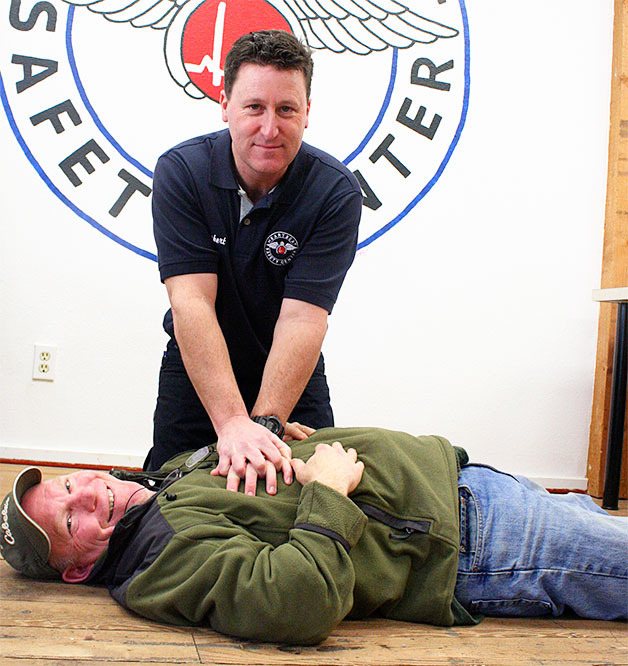Oak Harbor’s new Heartbeat Safety Center is about more than just CPR.
It’s about building community resilience, according to its Chief Operating Officer Rick Stratton.
“Our goal is to build a better community, a more resilient community,” he said.
A retired Navy lieutenant commander and EA-6B Prowler pilot, Stratton discusses the business in terms of a mission and what he hopes will be its far-reaching effect. He envisions an Oak Harbor where everyone is as prepared as possible when crisis hits.
“If something happens, guess who the first responder is?” Stratton asked. “It’s you. You may not consider yourself a first responder, but you are.”
The courses offered at the center include babysitter training, CPR and first aid, but Stratton hopes to expand its course selection according to community need.
And while basic hands only CPR training is offered for free by local fire departments, Stratton hopes to create partnerships that can assist agencies with both free training and paid certifications. Future programs could include senior fall prevention and disaster preparedness.
“If someone is already doing it, we’d like to be a part of that,” Stratton said.
Most importantly, Stratton wants to empower residents of all ages to know what to do until police, firefighters or ambulances arrive.
“We want to enable the community to step in for that two-to-four minutes until first responders can get there,” Stratton said. “That’s a mindset that doesn’t exist out there.”
Stratton will operate the emergency training center with the assistance of paramedic Rob May, a paramedic with Whidbey General Hospital who will be focusing on teacher training.
May, with 25 years of EMS experience, has seen too many deaths.
“We’ve seen people that died in this community unnecessarily,” May said. “Our goal is to at least meet, but hopefully exceed, the national standard.”
May said a lot can be learned from King County because of its sudden cardiac survival rate at 55 percent, the highest in the country and well above the national average of 8 percent. This is the case because Seattle residents seem to know what to do in case of an emergency, May said.
Learning key CPR techniques can mean the difference between life and death, May said. For instance, starting and continuing CPR when someone is non-responsive without stopping for more than eight seconds can give them a 75 percent chance of survival.
“A lot of people stop when we roll up,” May said. “For every one minute that someone isn’t getting CPR in cardiac arrest, it decreases their chances by 10 percent.”
Stratton said while the center will start with monthly courses, it hopes to build to weekly classes and beyond.
While a private business, Stratton and May hope to cross into public-private partnerships whereever possible and become a hub for emergency education.
For more information, visit www.heartbeatsafetycenter.com



